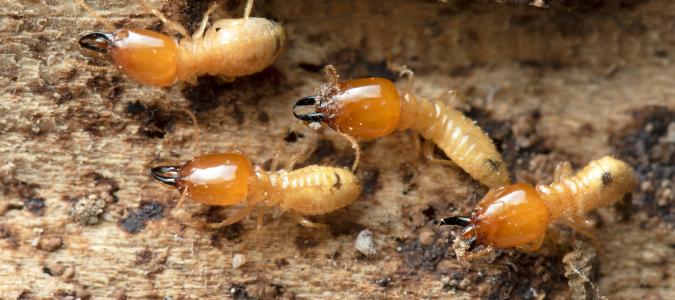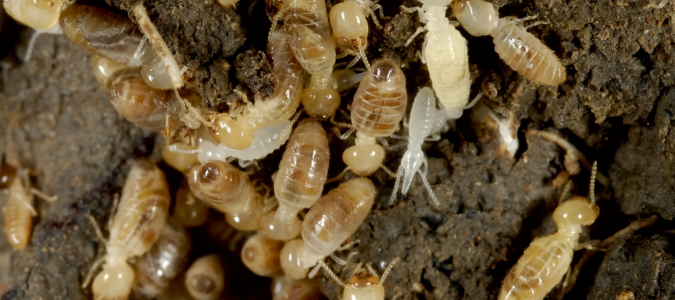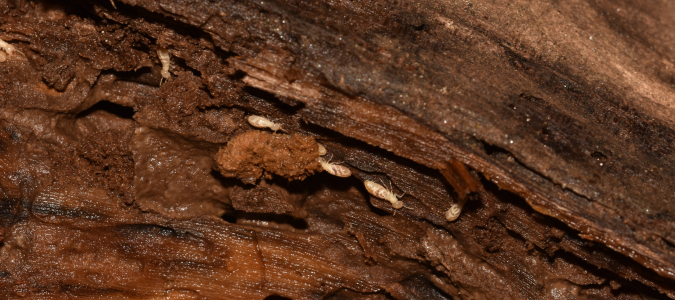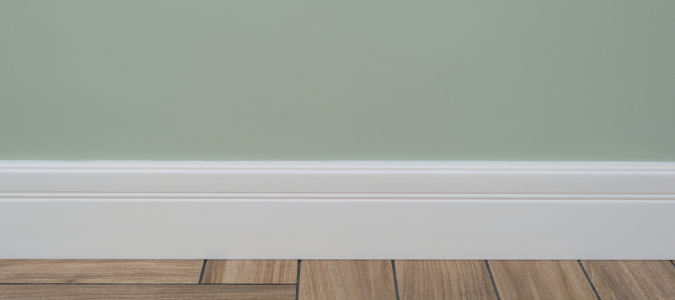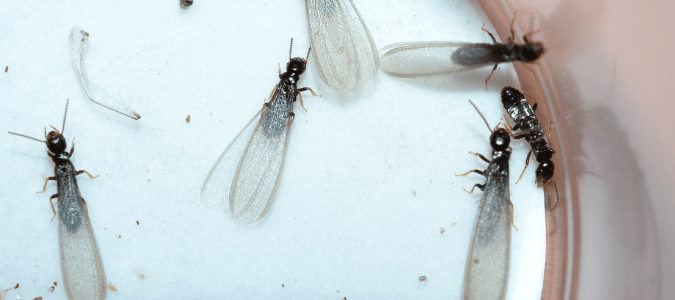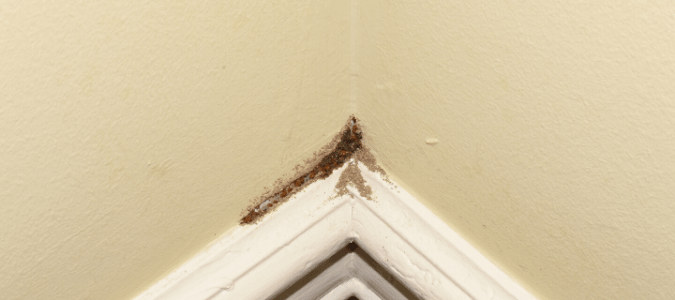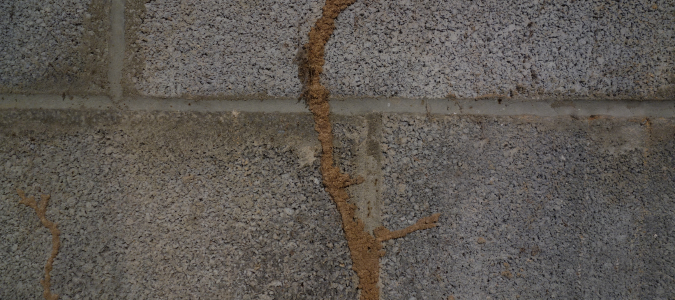Are you dealing with termites? If you’re noticing signs of wood damage around your home, you may have a termite infestation.
Termites can cause damage for months or years before homeowners notice them. In fact, most homeowners don’t identify a termite infestation until a year or two after the termites first arrived. The reason for this is that termites chew wood from the inside out and are stealthy pests that remain out of sight.
Because of their unseen activity, termites are hard pests to control. It’s important to work with a pest control specialist to control a termite population fully. Experts have the tools and experience to offer solutions for controlling termites.
How Long Does It Take for Termites to Do Damage?
How long does it take for termites to do damage? The length of time depends on several factors, such as the size of the termite colony, the type of termites, what they are feeding on and environmental conditions.
Larger termite colonies will cause more significant damage in less time. Advanced subterranean termite colonies, for example, can consist of hundreds of thousands of members. Subterranean termites tunnel underground, making them harder to detect and allowing them to cause significant damage before homeowners notice. In contrast, drywood termites often infest attics and other more visible areas of the home, making them easier to spot.
This proves that the type of termites that have infested your home also play a role in how much damage is done.
Next, how quickly termites eat depends on the material they’re feeding on. Termites eat cellulose, which is a component of wood. However, the type of wood and its condition makes a difference in how quickly the termites can consume it. Water-damaged wood is softer and easier for termites to consume.
Finally, the environmental conditions of your region impact how long it takes for termites to do damage. It’s helpful to understand when termite season takes place.
Warm, humid climates encourage termite activity. In warm climates, termite colonies are able to grow and feed year-round.
Termite Damage Timeline
While the timeline of termite damage varies on many factors, there are some basic milestones to keep in mind. Termites cause initial structural damage within a few months of infesting your home. Unfortunately, this damage often goes undetected.
It often takes a couple years to see noticeable termite damage. Signs of termite damage during this time include warped wood, sagging floors and hollow-sounding wood. These are consequences of extensive termite damage.
When left untreated, termite infestations can go on for years. After five or more years, termites can cause extreme structural damage that threatens the structural integrity of your home. This kind of damage is very costly and time-consuming to repair.
Catching termites as early as possible is the best way to prevent severe damage. However, since termites can go unnoticed for several months, it’s important that homeowners are proactive about deterring termites.
Working with a professional pest control service is the best way to stay on top of termite prevention. An expert can conduct regular inspections for termites.
If termites are detected, they can control them effectively and put prevention methods in place to deter these pests from returning.
How Can You Tell How Long You’ve Had Termites?
It can be very difficult to tell how long you’ve had termites because the majority of the damage they cause is often hidden. Termites chew through the wood inside your walls, floors, furniture and other structures. They’re stealthy creatures, and it’s highly unlikely that you’ll see an actual termite in your home.
The following can give you an idea of how long you’ve had termites in your home:
- Wood damage
- Hollow wood
- Discarded wings
- Termite frass
Let’s look at each one of these factors in a bit more depth.
Wood Damage
The most obvious sign of a termite infestation is wood damage. For example, when termites are inside your walls, you may notice that the paint is bubbling or peeling off. This is because subterranean termites need moisture to survive and the mud tubes they travel through are made of soil, wood, termite saliva and termite droppings.
Hollow Wood
Termites chew wood from the inside out, which is how they can be present for several years before you notice. However, if you knock on your walls or baseboards, you may hear the sound of hollow wood.
Discarded Wings
Another sign of a termite infestation is discarded wings. In the spring and summer months, reproductive termites leave their nest to mate and form new colonies. They swarm out of their nest to find a mate and then shed their wings.
After a swarm, you may spot discarded termite wings around windows, light sources and doors.
Termite Frass
Some termite species, such as drywood termites, leave droppings outside their tunnels, known as frass. Termite frass are tiny pellets that look like sand. It’s helpful to understand the differences between the most common termite species, such as subterranean termites versus drywood termites.
Mud Tubes
You may also spot mud tubes around your home or your home’s foundation. Termites build mud tubes to move between their nest and food source. Mud tubes resemble pencils in size and shape. Depending on how fresh they are, they will either appear moist and dark brown in color or dry and light brown in color.
If you see any of these signs of a termite infestation around your home, contact a pest control service. Keep in mind that termites can go unnoticed for several months, and catching an infestation early is the best way to prevent structural damage to your home.
Working with a professional is the most effective way to control termites in your home.
Is it Okay to Vacuum Up Termites?
Should you vacuum up termites? While this may seem like an effective way to remove termites, it does not address the underlying issue. You may remove visible termites by vacuuming them, but you will not control the entire colony.
It’s easy to confuse termites with other pests, so it’s helpful to understand what termites look like. It’s rare to see a termite apart from the rest of their colony, but it may happen.
However, termites are skilled at staying out of sight. They often live deep underground or inside the structure of your home. If you see a few termites around your home, it’s a sign that there could be thousands or hundreds of thousands more that you can’t see.
To completely control a termite colony, you need to address the visible termites and the ones that are out of sight. Working with a pest control service is necessary to fully control the termite population in your home.
Termites can cause severe damage and threaten the structural integrity of your home, so it’s important to prioritize long-term solutions over quick fixes like vacuuming them. A pest control specialist can identify the root cause of the termite infestation. After controlling the population, they can put measures in place to deter termites from coming back.
How to Deter Termites
There are a few things that homeowners can do to complement professional treatment. First, since termites are attracted to wood, it’s helpful to clear wood debris off your property. Remove wood piles, cardboard and any other cellulose materials that may attract termites. If you have a pile of firewood in your backyard, you should keep it away from your home’s exterior.
Next, it’s important to note that termites are attracted to moisture, so one way you can help prevent an infestation is to fix any moisture issues around your home. Address leaks and ensure proper drainage to deter these unwanted pests.
Drywood termites can enter your home through a variety of cracks and crevices, so sealing these areas can help keep them out. Inspect your home for any potential termite entry points and seal them up.
Finally, monitor for the signs of termites, such as termite frass, discarded wings and mud tubes.
Termites are hard to control without the help of a professional pest control service. There are some things that homeowners can do to help the process along, but professional help is required for a long-term termite solution.
Control Termites With Professional Help
Termites are resilient pests that are skilled at staying out of sight. They can cause significant damage to your home’s structure before you even know they’re there. The best way to get ahead of a costly termite problem is to work with a pest control service.
An expert can inspect your home, identify a termite infestation, control the full population and put prevention measures in place for the future.
ABC Can Help With Pest Infestations of Any Kind
Finding termites in and around your property can be extremely concerning. These pests are destructive and their colonies can hold thousands of members. If you suspect termites on your property, contact ABC Home & Commercial Services. Our professionals will be able to locate the termite colony and then implement an effective termite control plan.
